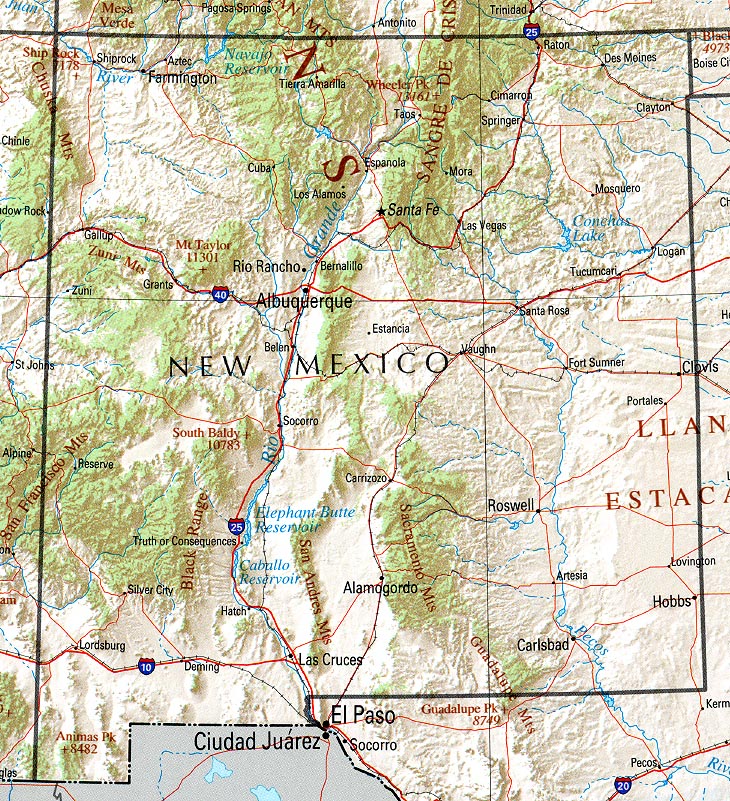The Very Large Array Radio Telescope Facility (VLA) is located in the Plains of San Agustin northwest of Socorro. The reason that their location is so important is that radio telescopes that collect radio waves in the same frequencies as water’s radio waves need to be in deserts to reduce this background signal from Earth-based water molecules.
"The Very Large Array is the most versatile, widely-used radio telescope in the world. It can map large-scale structure of gas and molecular clouds and pinpoint ejections of plasma from supermassive black holes. It is the world’s first color camera for radio astronomy, thanks to its new suite of receivers and a supercomputer than can process wide fields of spectral data simultaneously. The VLA is also a high-precision spacecraft tracker that NASA and ESA have used to keep tabs on robotic spacecrafts exploring the Solar System."
The array comprises twenty-eight 25-meter radio telescopes mounted on double parallel railroad tracks. Twenty-seven independent antennas are in use at a given time plus one spare, each of which has a dish diameter of 25 meters (82 feet) and weighs 209 metric tons The antennas are distributed along the three arms of a track, shaped in a Y-configuration, each of which measures 13 miles long. The array acts as a single antenna with a variable diameter. "The VLA is a multi-purpose instrument designed to allow investigations of many astronomical objects, including radio galaxies, quasars, pulsars, supernova remnants, gamma-ray bursts, radio-emitting stars, the sun and planets, astrophysical masers, black holes, and the hydrogen gas that constitutes a large portion of the Milky WayGalaxy as well as external galaxies."
It is worth the drive to see! Quite a marvel!
